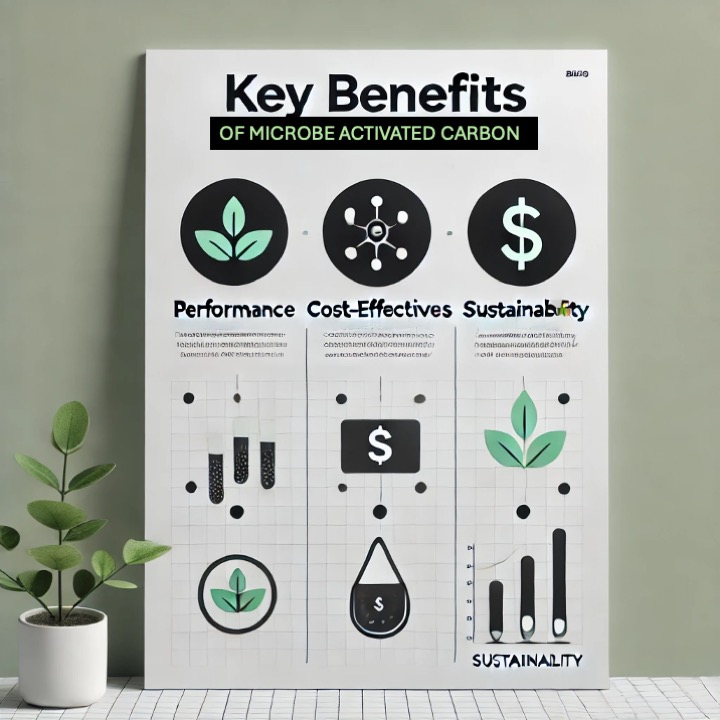
Following our discussion on what Microbe Activated Carbon (MAC) is and how it works, it’s time to explore the key benefits that make it a game-changing innovation in microbial technology. MAC not only enhances microbial survival and efficiency but also addresses crucial aspects of performance, cost-effectiveness, and sustainability—factors that are critical for modern agricultural and environmental applications.
The foundation of MAC’s superior performance lies in its high microbial concentration, retention of metabolites, and optimal delivery mechanism.
Traditional microbial formulations often suffer from high costs due to packaging, transportation, and application inefficiencies. MAC eliminates many of these challenges, providing a more economical and scalable solution for farmers and industries.
In addition to performance and cost benefits, MAC aligns with the growing demand for sustainable agricultural practices and environmental conservation.
With its ability to enhance microbial efficiency, reduce costs, and support sustainable farming, Microbe Activated Carbon (MAC) is setting a new standard in microbial solutions. Whether used in bio-fertilization, bio-pesticide applications, soil rejuvenation, or composting, MAC delivers superior results while ensuring environmental responsibility.
As we continue exploring the potential of MAC, our next blog will focus on real-world applications and success stories, showcasing how MAC is transforming agriculture and microbial technology. Stay tuned!
There was this interesting discussion I had with Mr Prateek
The teaser of Self Running Soil Revolution for an investment
The effectiveness of any microbial product depends not just on
Mitrasena (Army of friends) is global brand of Biowall Agrihealth Pvt Ltd. Mitrasena products & protocols enables seamless transition to non-toxic farming by concurrently offering Excellent Protection, Higher Productivity & Profit and, Ease of use.
We are a DIPP recognized Startup working for non-toxic crop protection. We are driven by a highly passionate and professionally competent team.
MitraSena © 2025 | All rights reserved | Innovatively Designed and Built by Social Mukul Media
Have any query about bulk orders? Get in touch with us.